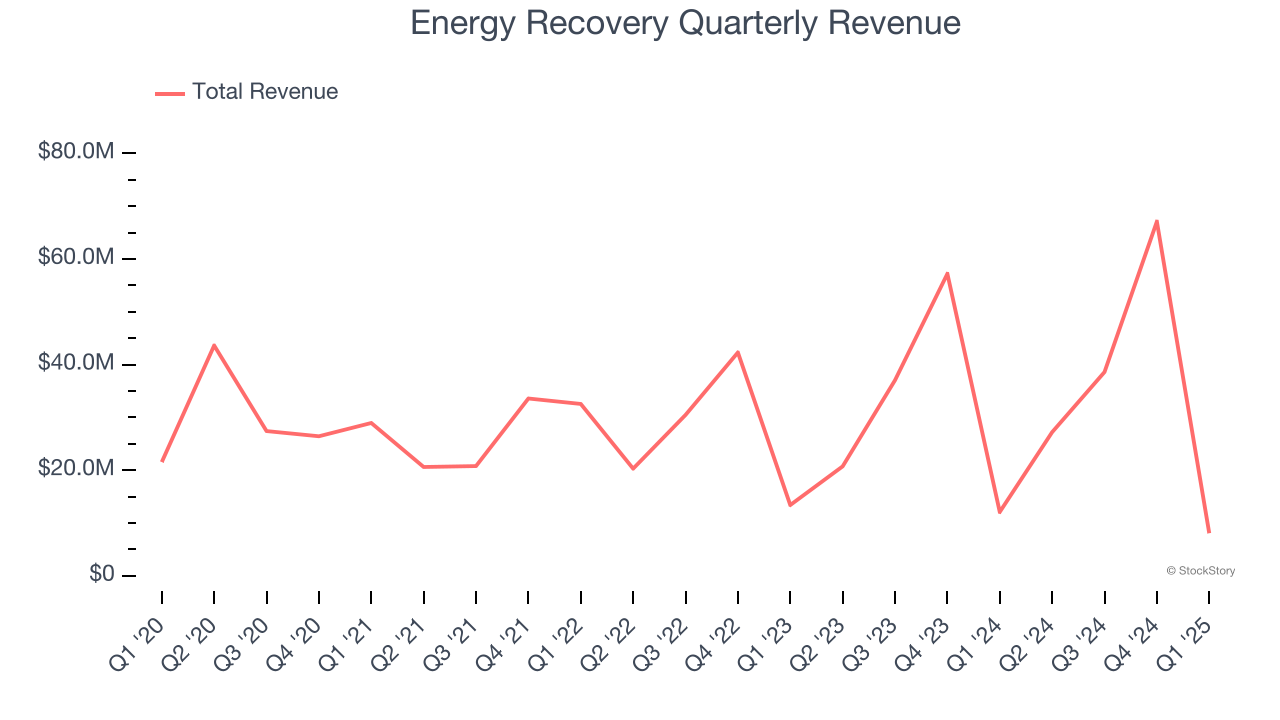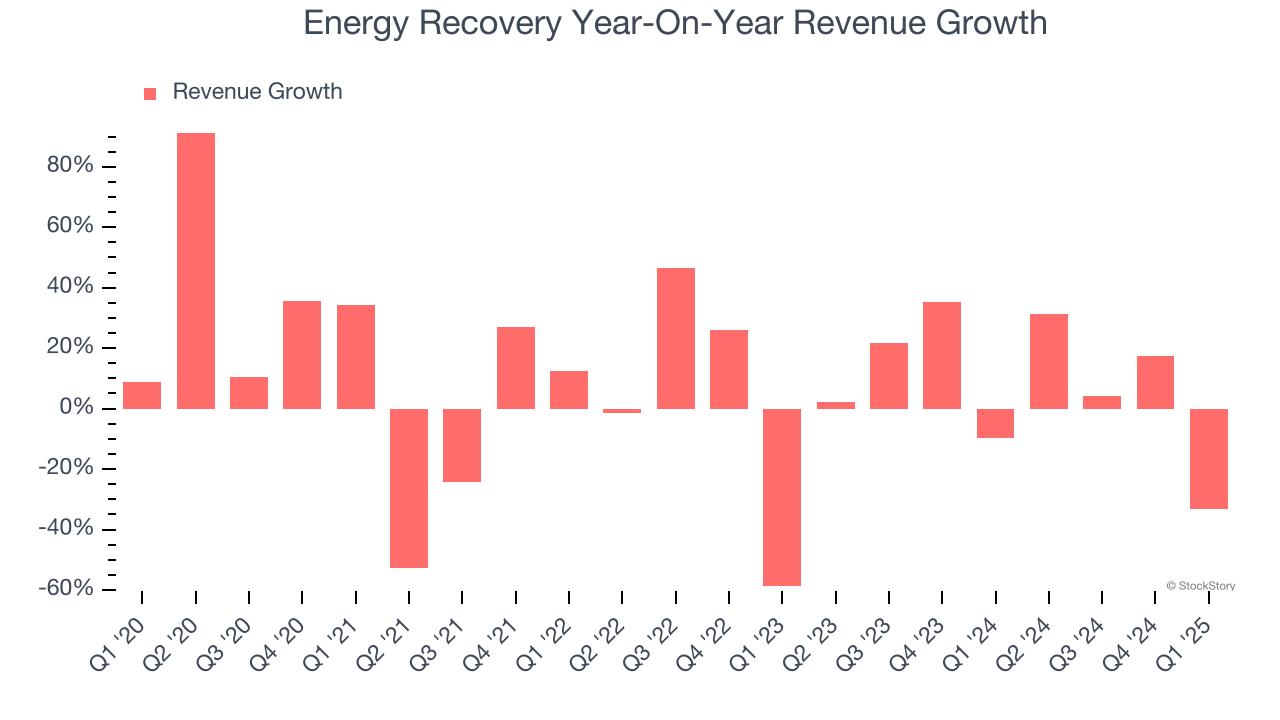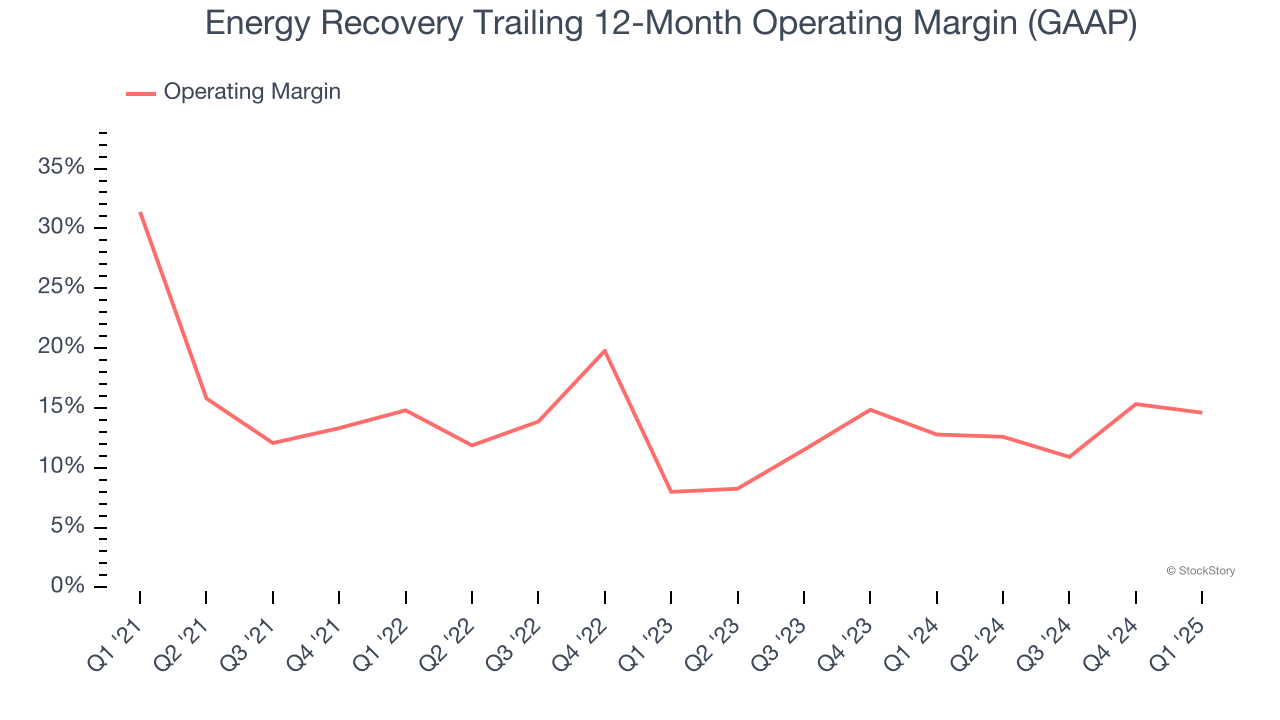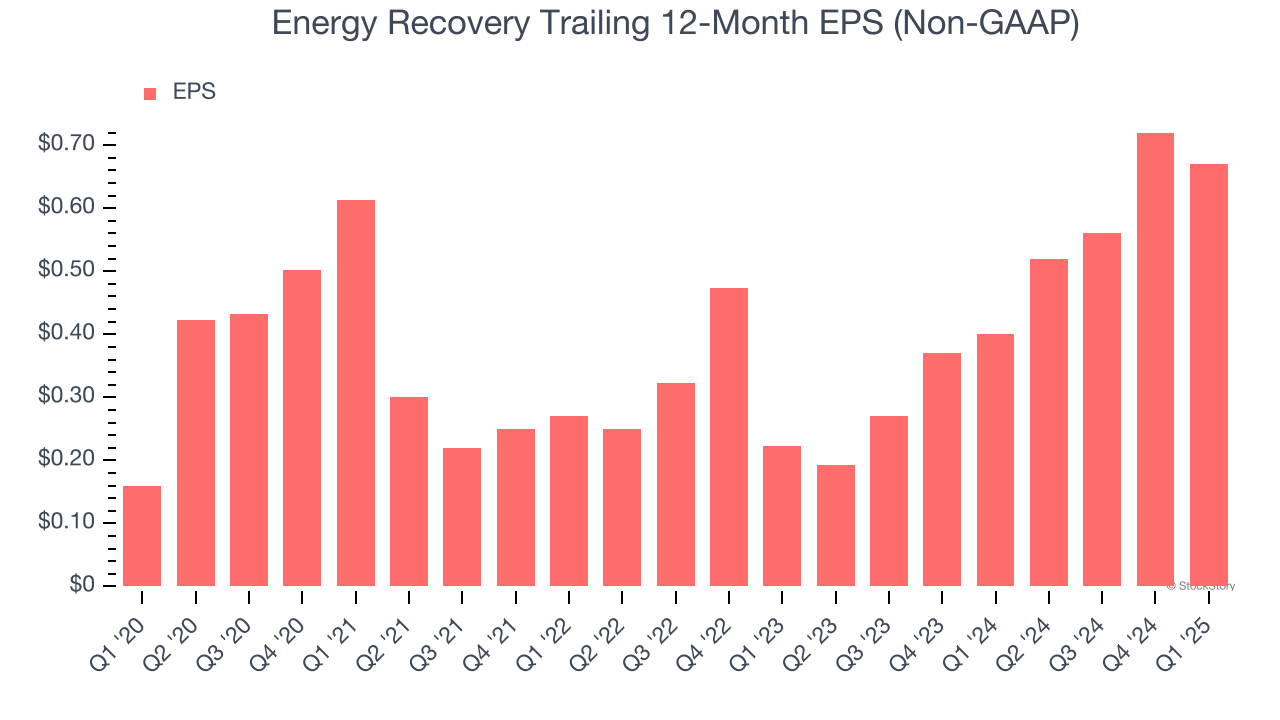
Energy recovery device manufacturer Energy Recovery (NASDAQ: ERII) fell short of the market’s revenue expectations in Q1 CY2025, with sales falling 33.3% year on year to $8.07 million. Its non-GAAP loss of $0.13 per share was significantly below analysts’ consensus estimates.
Is now the time to buy Energy Recovery? Find out by accessing our full research report, it’s free.
Energy Recovery (ERII) Q1 CY2025 Highlights:
- Revenue: $8.07 million vs analyst estimates of $21.97 million (33.3% year-on-year decline, 63.3% miss)
- Adjusted EPS: -$0.13 vs analyst estimates of $0 (significant miss)
- Operating Margin: -156%, down from -90.4% in the same quarter last year
- Free Cash Flow Margin: 130%, up from 46.9% in the same quarter last year
- Market Capitalization: $814.8 million
Company Overview
Having saved far more than a trillion gallons of water, Energy Recovery (NASDAQ: ERII) provides energy recovery devices to the water treatment, oil and gas, and chemical processing sectors.
Sales Growth
A company’s long-term performance is an indicator of its overall quality. Any business can experience short-term success, but top-performing ones enjoy sustained growth for years. Over the last five years, Energy Recovery grew its sales at a solid 9.7% compounded annual growth rate. Its growth beat the average industrials company and shows its offerings resonate with customers, a helpful starting point for our analysis.

We at StockStory place the most emphasis on long-term growth, but within industrials, a half-decade historical view may miss cycles, industry trends, or a company capitalizing on catalysts such as a new contract win or a successful product line. Energy Recovery’s annualized revenue growth of 15.1% over the last two years is above its five-year trend, suggesting its demand was strong and recently accelerated. 
This quarter, Energy Recovery missed Wall Street’s estimates and reported a rather uninspiring 33.3% year-on-year revenue decline, generating $8.07 million of revenue.
Looking ahead, sell-side analysts expect revenue to grow 17.4% over the next 12 months, an improvement versus the last two years. This projection is eye-popping and implies its newer products and services will spur better top-line performance.
Unless you’ve been living under a rock, it should be obvious by now that generative AI is going to have a huge impact on how large corporations do business. While Nvidia and AMD are trading close to all-time highs, we prefer a lesser-known (but still profitable) stock benefiting from the rise of AI. Click here to access our free report one of our favorites growth stories.
Operating Margin
Energy Recovery has been a well-oiled machine over the last five years. It demonstrated elite profitability for an industrials business, boasting an average operating margin of 16.6%. This result isn’t surprising as its high gross margin gives it a favorable starting point.
Analyzing the trend in its profitability, Energy Recovery’s operating margin decreased by 16.8 percentage points over the last five years. This raises questions about the company’s expense base because its revenue growth should have given it leverage on its fixed costs, resulting in better economies of scale and profitability.

This quarter, Energy Recovery generated an operating profit margin of negative 156%, down 65.3 percentage points year on year. Since Energy Recovery’s operating margin decreased more than its gross margin, we can assume it was less efficient because expenses such as marketing, R&D, and administrative overhead increased.
Earnings Per Share
Revenue trends explain a company’s historical growth, but the long-term change in earnings per share (EPS) points to the profitability of that growth – for example, a company could inflate its sales through excessive spending on advertising and promotions.
Energy Recovery’s EPS grew at an astounding 33.2% compounded annual growth rate over the last five years, higher than its 9.7% annualized revenue growth. However, this alone doesn’t tell us much about its business quality because its operating margin didn’t expand.

Diving into Energy Recovery’s quality of earnings can give us a better understanding of its performance. A five-year view shows that Energy Recovery has repurchased its stock, shrinking its share count by 2.9%. This tells us its EPS outperformed its revenue not because of increased operational efficiency but financial engineering, as buybacks boost per share earnings. 
Like with revenue, we analyze EPS over a more recent period because it can provide insight into an emerging theme or development for the business.
For Energy Recovery, its two-year annual EPS growth of 73.3% was higher than its five-year trend. We love it when earnings growth accelerates, especially when it accelerates off an already high base.
In Q1, Energy Recovery reported EPS at negative $0.13, down from negative $0.08 in the same quarter last year. This print missed analysts’ estimates, but we care more about long-term EPS growth than short-term movements. Over the next 12 months, Wall Street expects Energy Recovery’s full-year EPS of $0.67 to grow 21.9%.
Key Takeaways from Energy Recovery’s Q1 Results
We struggled to find many positives in these results. Its revenue missed significantly and its EPS fell short of Wall Street’s estimates. Overall, this was a softer quarter. The stock traded down 18.2% to $12.30 immediately following the results.
The latest quarter from Energy Recovery’s wasn’t that good. One earnings report doesn’t define a company’s quality, though, so let’s explore whether the stock is a buy at the current price. We think that the latest quarter is only one piece of the longer-term business quality puzzle. Quality, when combined with valuation, can help determine if the stock is a buy. We cover that in our actionable full research report which you can read here, it’s free.

